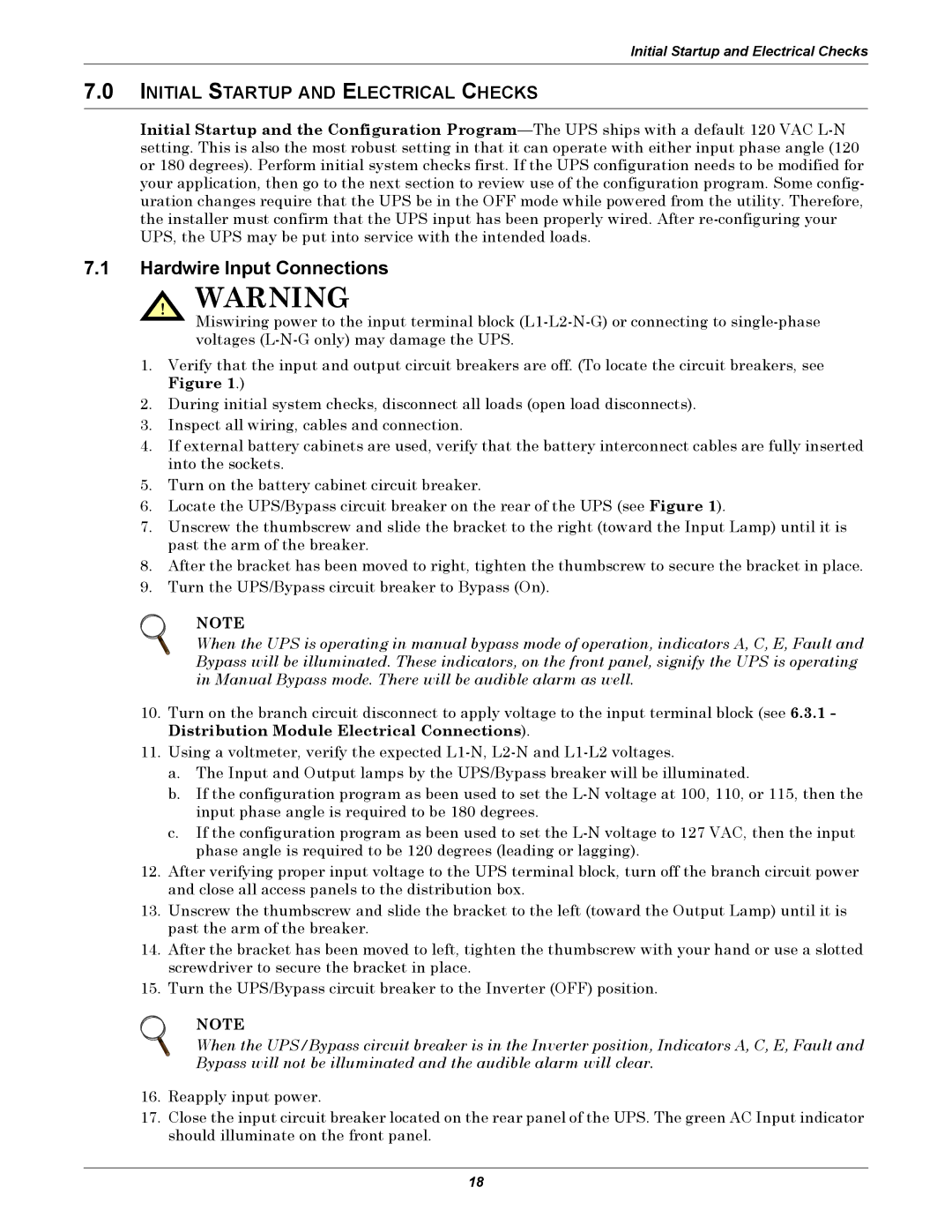
Initial Startup and Electrical Checks
7.0INITIAL STARTUP AND ELECTRICAL CHECKS
Initial Startup and the Configuration
7.1Hardwire Input Connections
! WARNING
Miswiring power to the input terminal block
1.Verify that the input and output circuit breakers are off. (To locate the circuit breakers, see Figure 1.)
2.During initial system checks, disconnect all loads (open load disconnects).
3.Inspect all wiring, cables and connection.
4.If external battery cabinets are used, verify that the battery interconnect cables are fully inserted into the sockets.
5.Turn on the battery cabinet circuit breaker.
6.Locate the UPS/Bypass circuit breaker on the rear of the UPS (see Figure 1).
7.Unscrew the thumbscrew and slide the bracket to the right (toward the Input Lamp) until it is past the arm of the breaker.
8.After the bracket has been moved to right, tighten the thumbscrew to secure the bracket in place.
9.Turn the UPS/Bypass circuit breaker to Bypass (On).
NOTE
When the UPS is operating in manual bypass mode of operation, indicators A, C, E, Fault and Bypass will be illuminated. These indicators, on the front panel, signify the UPS is operating in Manual Bypass mode. There will be audible alarm as well.
10.Turn on the branch circuit disconnect to apply voltage to the input terminal block (see 6.3.1 - Distribution Module Electrical Connections).
11.Using a voltmeter, verify the expected
a.The Input and Output lamps by the UPS/Bypass breaker will be illuminated.
b.If the configuration program as been used to set the
c.If the configuration program as been used to set the
12.After verifying proper input voltage to the UPS terminal block, turn off the branch circuit power and close all access panels to the distribution box.
13.Unscrew the thumbscrew and slide the bracket to the left (toward the Output Lamp) until it is past the arm of the breaker.
14.After the bracket has been moved to left, tighten the thumbscrew with your hand or use a slotted screwdriver to secure the bracket in place.
15.Turn the UPS/Bypass circuit breaker to the Inverter (OFF) position.
NOTE
When the UPS/Bypass circuit breaker is in the Inverter position, Indicators A, C, E, Fault and Bypass will not be illuminated and the audible alarm will clear.
16.Reapply input power.
17.Close the input circuit breaker located on the rear panel of the UPS. The green AC Input indicator should illuminate on the front panel.
18
